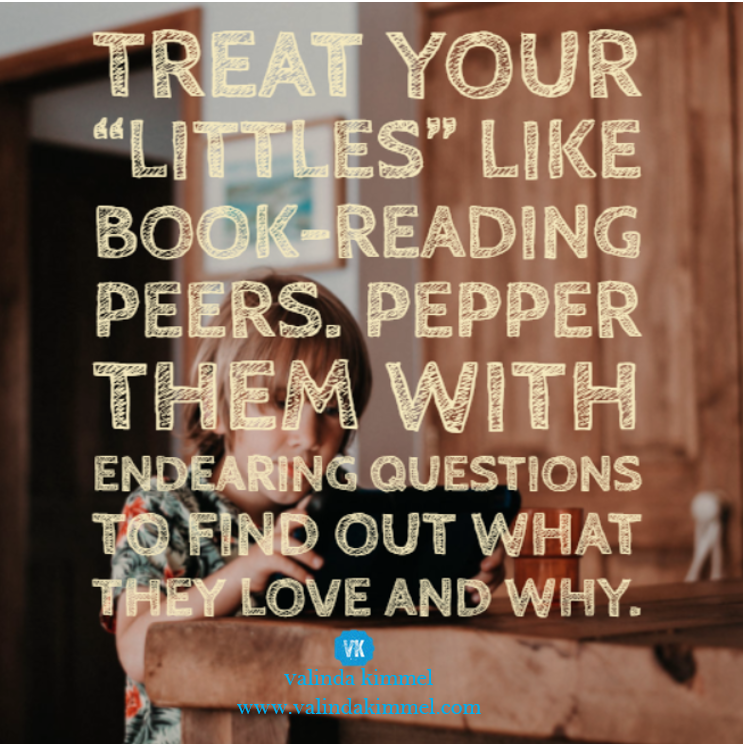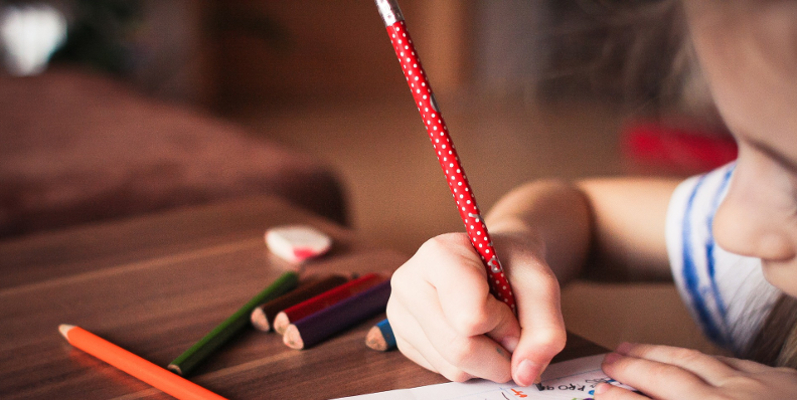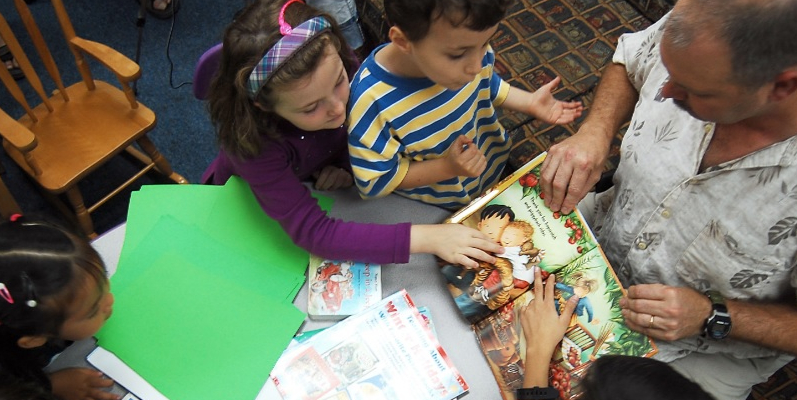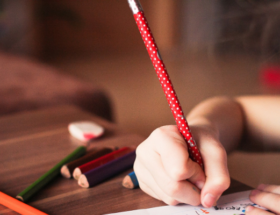We wring our hands and lament that so many of our students are not learning to read and write. We wonder and debate. We study data and brainstorm solutions. We talk and plan and work and stay late and plan some more.
I’ve been accused on more than one occasion of offering overly simplistic solutions. The problem of too many kids not being able to read and write really can, I believe, be resolved easily.
We must redouble our efforts at providing early and sustained, research-based support.
I’m not talking about stuffed to the brim, boxed programs or slick digital resources. I’m not advocating for untold dollars spent on “intervention” materials or personnel to deliver services.
What I am talking about is intentional, consistent, literacy support that expands on the instructional resources teachers are already making use of in classrooms that grow young readers.
Over the Top Reading Support
If you’re teaching young readers–
Label anything and everything in the classroom
Provide every kind of literacy in your room you imagine your students encounter outside school-
- Bus schedules
- Fast food menus
- Food labels
- Coupon flyers
- Atlas and map keys
- Ads for toys and games
- Blurbs from movie and gaming containers
- Infographics for kids
Read, read, and read some more.
Fill your room with shelves of books in a variety of genres, topics and reading levels. Book talk every day and when appropriate turn over some of the “booktalking” to your students. Encourage kids to have a “What I’m Going to Read Next” tab in their response journals and get rid of the reading log. Confer often with your students about what they’re reading and whether or not they’d recommend the text or not.
Treat your “littles” like book-reading peers. Pepper them with endearing questions to find out what they love and why. Encourage them to talk about what they’re reading. Committing to practices like those mentioned here will fortify the formal reading instruction in your classroom.
Be forewarned! Your room will soon be overflowing with tiny bibliophiles.

Critical Literacy Support
Teaching kids to read is about so much more than decoding or reading fluently. Students should sense the love affair their teacher has with reading great books. They should also know without a doubt that reading is about making meaning and responding to what they understand from the text. Every time I read (or am read to), I should change; a change in my thinking, actions, feelings, perspectives.
Reading changes the reader.
In their book, Critical Literacy: Enhancing Students’ Comprehension of Text, Maureen Mclaughlin and GlennL. DeVoogd write:
There is a wide variety of ideas and conditions that motivate students to read. We may already be using some of these ideas in our teaching; others may be new. They include but are not limited to:
- Making reading, writing, speaking, listening, and viewing pleasurable, and providing sufficient time for students to engage in these activities.
- Creating a classroom library that includes multiple levels of narrative and informational texts, addresses a wide range of interests, provides access to a variety of genres, and promotes critical analysis.
- Providing time for active, creative responses to texts using discussion and multiple modes of response (writing, sketching, dramatizing, singing, projects, and so on) to promote critical analysis and creation of a range of new literacies.
- Encouraging and valuing students’ independent thinking as they read, write, speak, listen, and view. Although this list contains a variety of ideas, it is not exhaustive.
We do not wait until young readers can read accurately and fluently before making sure we engage in modeling and practicing meaning making. From the very start when reading books aloud, teachers think out loud inviting students to listen to the mental processes of a reader as they comprehend texts. Once students are reading proficiently on their own, teachers continue to facilitate discussions that lead readers to thoughtfully respond to both the content and the craft of the texts they read.
Writing Support
In your classroom, students should have opportunity to write everywhere and about anything and everything. We cannot underestimate the role of writing when it comes to learning to read. Writing and reading possess an unbreakable reciprocal relationship.
Write at recess—provide materials in a basket or container so kids can quickly write rules for impromptu games, pretend moments they elaborate on, things they’ve found on the playground. Let them write when they return from PE excited about new equipment the coach introduced on that day. My kindergarten students came back from the gym one day absolutely giddy about new three-wheeled vehicles they’d tried out. We stopped right that moment and I let them write and sketch, explain and dictate. It is still, to this day, one of the sweetest memories of unbridled joy I’ve ever experienced in my kindergarten classroom.
Write about art and music, performances in the auditorium, field trips. Provide plenty of paper, pens, markers, paint for designing imaginative play messages, recipes, notes, restaurant orders, signs for labeling block structures, directions for creating art projects, and instructions for playing games. This is not only for kindergarten. Make these writing moments available for any classroom, any grade level.
Ralph Fletcher shares in his book, Joy Write: Cultivating High Impact, Low-StakesWriting, that kids should engage often in “greenbelt” writing. He’s describing the kind of carefree writing with abandon that comes from students being given absolute, complete choice. Ralph writes that teachers should commit to the kind of environment that supports our “feral” writers.
Foster Essential Dispositions
Early literacy holds much that young children might learn. Yet we cannot teach everything and must make choices about what content to teach and which dispositions to encourage. (Roskos, Christie, Richgels, 2007)
There are no reading programs that guide teachers to facilitate the growth of essential dispositions for readers and writers. Readers, proficient readers, are found to be in possession of certain habits of mind and heart. In their article for NAEYC, Roskos, Christie and Richgels share that there are dispositions that are critical for early literacy learning—
- willingness to listen to stories
- desire to be read to
- curiosity about words and letters
- exploration of print forms
- playfulness with words
- enjoyment of songs, poems, rhymes, jingles, books, and creative play
I shared a quote from Mem Fox, beloved author, in an earlier post, but I think it’s the most appropriate way to bring this post to a close.
The fire of literacy is created by the emotional sparks between a child, a book, and the person reading. It isn’t achieved by the book alone, nor by the child alone, nor by the adult who’s reading aloud—its’ the relationship winding between all three, bringing them together in easy harmony.
A child. Lots of books. An adult who fosters reading, writing, critical literacy support. And essential dispositions, habits of mind.
That’s all. Light the fire of literacy.











Thank you so much for this post! I am starting at a new school and I miss some of the “stuff” I had at my old school even though I haven’t met my kids yet. I am also moving from a 6-12 focus the past 2 years to a K-6 focus both in special education. When I think about my JH/HS classes it wasn’t the programs that made my readers better but the books that made them want to hide it in their desk to read ahead in the next class that did it. It was taking an interest in making the books interesting and finding books together that they would love that made my kids readers. Thank you for speaking to my heart that it is the relationships with those things and not the things!